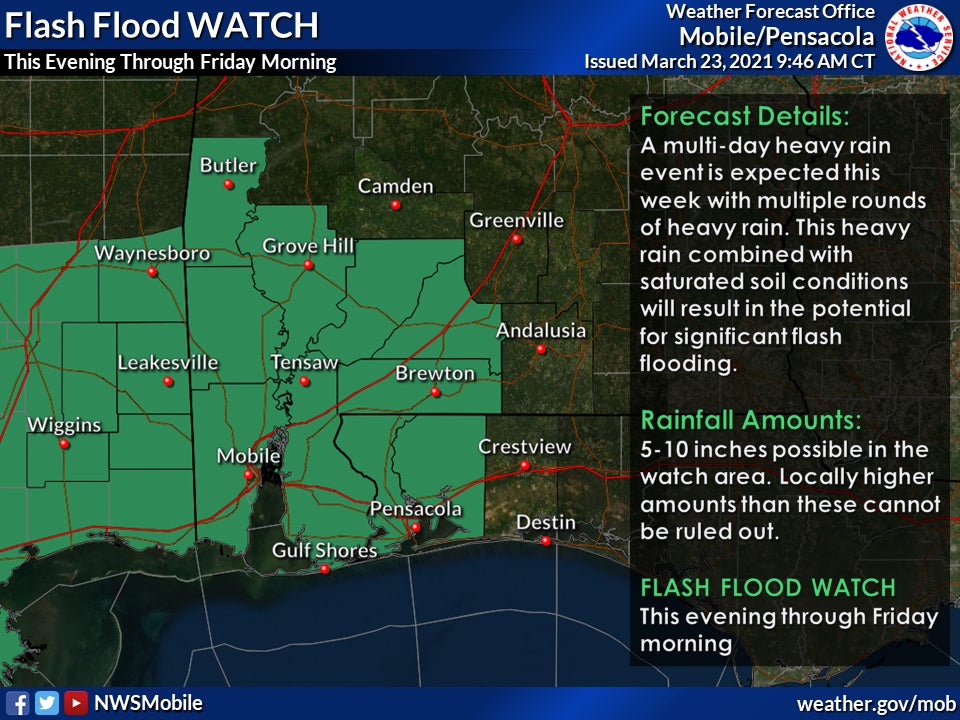Forgotten Trails – by Lydia Grimes
Published 1:03 am Monday, January 19, 2009
By Staff
Hancock trial continues
Over the past couple of weeks, I've been sharing some information concerning the murder of Jesse Troutman and subsequent trial of Frederick Hancock.
This story turned out to be longer than I thought. Just stay with me and I will get it all in.
Picking up where I last left off, the story continues with information concerning the trial of Hancock.
The trial lasted two days. The jury was out four days, at the end of which time Judge S.E. Brewer, who tried the case, entered an order of mistrial.
It was understood that the jury stood eleven for life imprisonment and one for acquitted.
Heavy hearted, Hancock returned the Brewton jail.
Escape
Then on the night of May 9, 1906, by sawing two bars of the front door of the jail, Hancock escaped together with a man named Ben Stark.
Although Mrs. Hancock was watched, her husband managed to contact her of his whereabouts and she joined him in Kansas City, Missouri.
There Hancock altered his appearance and engaged in horse trading.
That same summer he was arrested because he answered to the description of a horse thief. He might still have not been connected with the Troutman murder, but when the officer apprehended him he is reported to have made his confession.
Hancock had suffered a severe laceration on one foot.
Back in Brewton he asked for some carbolic acid to use in water to bathe the injury.
A member of his family took him a one-ounce bottle of carbolic acid.
Justice
On that night on July 8, 1906, Hancock drank the entire contents of the bottle. He succumbed a few minutes later having left a note in which he said he was going where he would get a just trial.
Thus was the full circle of justice completed. At least insofar as the two principles involved in the case were concerned.
As for Hancock's widow we can only assume that after a time of shock, she picked up the threads of her life to rear her two sons.
The sister-in-law, having lost both Troutman and her brother-in-law in the tragic chain of events, became deranged for some time, but finally recovered.
The cannons
The cannons came to Brewton during the summer of 1906, and although they have silently stood watch over many events such as the Troutman-Hancock case, the cannons themselves have led a peaceful existence.
According to Ed Leigh McMillan and John David Finlay, the cannons were given to Escambia County by Fort Barrancas at Pensacola early in 1905, when that fort was disposing of the antiquated artillery.
Fort Barrancas was built by the Spaniards, but the cannons at Brewton, according to an expert who came here and examined them, were made after the Civil War and have probably never been fired.
The have not been fired since they were brought to Brewton.
Although the cannons have played no significant role in Brewton's history, they have been silent sentinels for some 70 years and from their imposing appearance give Brewton the feeling of a fortified city.
I hope you've gotten some interesting information or at least some entertainment from this article. It was interesting to pass the story along to you.
Next week, I'll be moving on to a new subject.
If you have a topic that you'd like to see discussed in this space, please let me know.
Articles on people, places and events are interesting to me and to others who call this area home.
If you want to share something, give me a call at 867-4876 or you can write to me at lydia.grimes@brewtonstandard.com.
Until next time, happy hunting.




